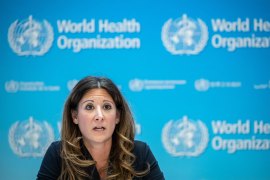Views On AIDS: Despite Advances, Still No Cure, No Vaccine, And Indifference Grows
The Washington Post: Turning The Tide With AIDS
The story of the AIDS pandemic has been grim for so long that optimism seems hardly possible. But as the 19th International AIDS conference opens in Washington on Sunday, there is hope for control of a disease that has killed nearly 35 million people over three decades and 1.7 million in the past year. Unfortunately, there is still no cure, nor a vaccine proven safe and effective. But a headline in the New England Journal of Medicine asks, "The Beginning of the End of AIDS?" This is not wishful thinking (7/21).
The Washington Post: AIDS Remains A Problem. But Is It Still A Priority For The Gay Community?
HIV no longer seems to be a priority for some in the gay community. Foundations focused on lesbian, gay, bisexual and transgender people, which have historically provided millions of dollars in crucial funding for HIV service organizations, are shifting their resources elsewhere. The fight is different now. There is a lack of urgency among some well-off, white gay men, a segment of the LGBT community that was crucial in battling HIV and turning the tide in the 1980s and '90s (Daniel Tietz, 7/20).
Boston Globe: A Quiet Breakthrough On HIV
Thirty years into the battle against HIV, medical researchers still haven't discovered a cure or a vaccine. But the Food and Drug Administration’s recent approval of a new use for the antiretroviral drug Truvada marked a quiet breakthrough that could bring them closer to that goal (7/21).
Philadelphia Inquirer: With Return To The U.S., AIDS Group Focuses On Girls
United Nations statistics show that young women are most likely to be infected with HIV due to several factors, including a lack of education. Yet only 2 cents of every international-aid dollar directed toward fighting AIDS focuses on young women. Women ages 15-24 have twice the infection rate of young men. This affects society at large. Without HIV, the mortality rate among women with children would be 20 percent lower. More orphans would still have a mother (7/22).






